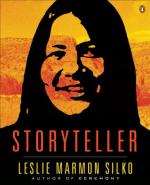|
This section contains 482 words (approx. 2 pages at 400 words per page) |

|
Native American Rights Movements
It is difficult to conceive of this country's society and culture before the 1960s, yet the very visible markers of sexism and racism were everywhere. Racial segregation was the norm, and few African Americans and other non-European ethnic minorities had progressed appreciably economically or socially. Following in the footsteps of the vocal Black Rights advocates of the 1960s, American Indians began organizing at this time as well. Some actions were bold and angry, designed to capture the attention of the nation and government. For example, the American Indian Movement (AIM) seized Alcatraz Island in San Francisco Bay for a period of nineteen months in 1970-71. This same organization occupied the territory of Wounded Knee, South Dakota, in 1973. Other, less militant organizations such as the National Tribal Chairman's Association, also formed around this time (1971). This seizing of power and putting forward of demands worked to...
|
This section contains 482 words (approx. 2 pages at 400 words per page) |

|




